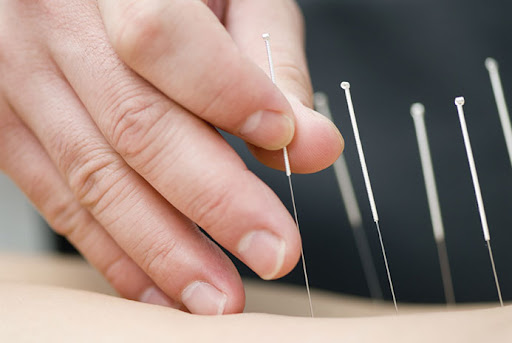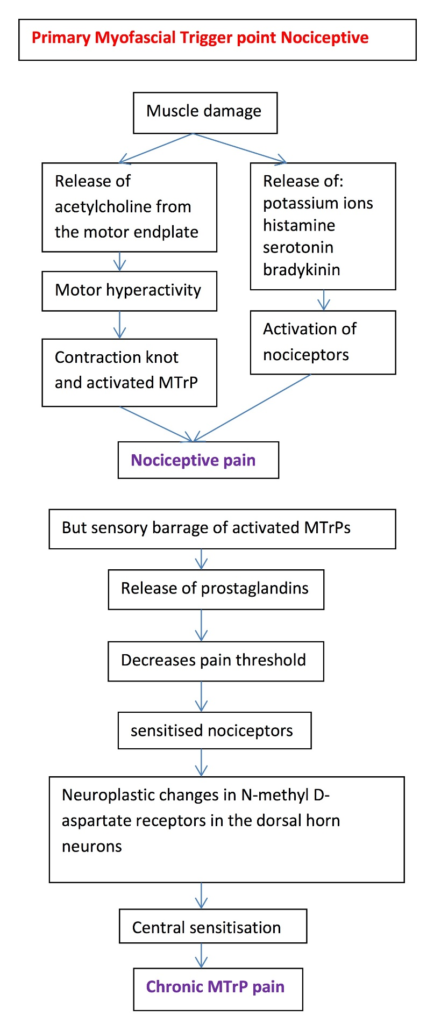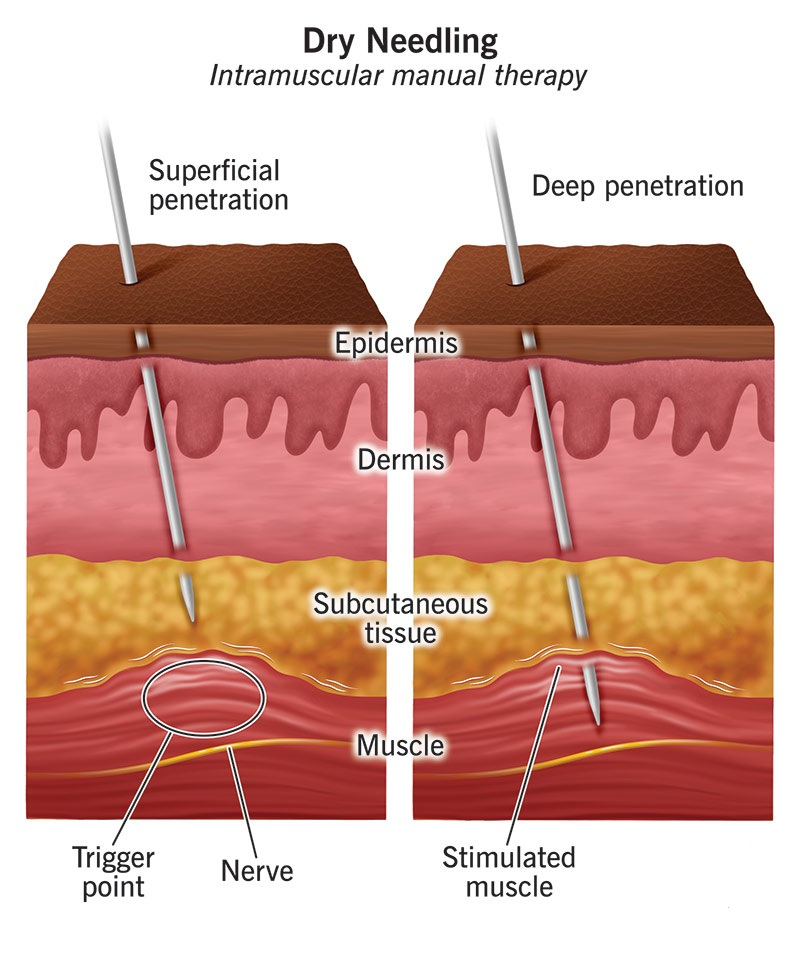
Dry Needling
Unlocking Pain Relief: The Power of Dry Needling
Are you tired of enduring persistent pain that hampers your daily activities and diminishes your quality of life? Conventional treatments might not always provide the relief you desperately seek. However, amidst the array of pain management techniques, dry needling emerges as a promising approach that targets the root cause of your discomfort. This article delves into the intricacies of dry needling, shedding light on its mechanisms, applications, and the profound relief it can offer.

What is Mayofascial Trigger points?
In the word “myofascial,” “myo” means “muscle.” Fascia is the thin, white connective tissue wrapped around your muscles. Trigger points are knotted, tender areas that develop in your muscles. These trigger points are highly sensitive and can be painful when touched. Sometimes, a trigger point may be near the location of your pain. But they’re also often the cause of referred pain. Referred pain is pain that affects another part of your body.
How Does Dry Needling Work?
When your muscle is overused or damaged, it goes into an energy crisis where the muscle fibers aren’t getting an adequate blood supply. When they don’t get the normal blood supply, they don’t get the oxygen and nutrients that allow your muscle to go back to its normal resting state. Moreover, the metabolic toxins accumulate and increase pain and sensitivity at the local area. When this happens, the tissue near your trigger point becomes more acidic. Your nerves are sensitized, which makes the area sore and painful.
Stimulating a trigger point with a needle helps draw normal blood supply back to flush out the area and release tension. The prick sensation can also fire off nerve fibers that stimulate your brain to release endorphins, your body’s homemade pain medication.
Once your therapist locates a trigger point, they’ll insert a needle through your skin directly into it. They might move the needle around a little to try to get what’s called a local twitch response — a quick spasm of your muscle. This reaction can be a good sign that your muscle is reacting.
Some people feel improvement in their pain and mobility almost immediately after a dry needling session. For others, it takes more than one session.
How Does Dry Needling Work?
When your muscle is overused or damaged, it goes into an energy crisis where the muscle fibers aren’t getting an adequate blood supply. When they don’t get the normal blood supply, they don’t get the oxygen and nutrients that allow your muscle to go back to its normal resting state. Moreover, the metabolic toxins accumulate and increase pain and sensitivity at the local area. When this happens, the tissue near your trigger point becomes more acidic. Your nerves are sensitized, which makes the area sore and painful.
Stimulating a trigger point with a needle helps draw normal blood supply back to flush out the area and release tension. The prick sensation can also fire off nerve fibers that stimulate your brain to release endorphins, your body’s homemade pain medication.
Once your therapist locates a trigger point, they’ll insert a needle through your skin directly into it. They might move the needle around a little to try to get what’s called a local twitch response — a quick spasm of your muscle. This reaction can be a good sign that your muscle is reacting.
Some people feel improvement in their pain and mobility almost immediately after a dry needling session. For others, it takes more than one session.

Procedure of Dry Needling
First, your provider will sterilize the treatment area and prepare the needle. The needles are always single-use, sterile and disposable. Then, they’ll use one hand or their fingers to feel (palpate) the area to locate the trigger point. With their other hand, they’ll place the needle — surrounded by a plastic guide tube — over the area. The guide tube helps your provider accurately tap the needle into place while working with one hand.
Your provider will gently tap the needle into the top layer of your skin (epidermis) and discard the guide tube. The technique your provider uses may vary. Common dry-needling techniques include:
Superficial: Your provider will insert the needle 5 to 10 millimeters into the bottom layer of your skin (subcutaneous tissue) above the trigger point.
Deep: Your provider will insert the needle beyond the subcutaneous tissue deep into your muscle to penetrate the trigger point.
Depending on the technique, your provider may leave the needle in place for as short as two seconds to as long as 30 minutes. They may also use the pistoning technique. Also called the in-and-out technique, this method involves your provider quickly moving the needle up and down through the tissue.
Your provider may only use one to two needles during your first treatment. Once they see your response to the method, your provider may start using more needles. It depends on your condition. For instance, they may use up to 10 to 15 needles along your spine for a back treatment.
During the treatment, you may feel muscle soreness or twitching. These sensations are normal and a sign that your muscles are responding to the treatment.
After your treatment, make sure to drink plenty of water to stay hydrated. You may experience increased muscle soreness after the treatment but it’s important to keep moving. This is normal and may last for 24 to 36 hours. You could see some bruising near the treated area. This bruising may last for up to a week.
Conditions Treated with Dry Needling:
The versatility of dry needling renders it effective in managing an extensive spectrum of musculoskeletal conditions, including.
Chronic Back Pain: By targeting trigger points nestled within the intricate musculature of the back, dry needling offers relief from persistent back pain attributed to muscle tension or spasms.
Neck Pain: Addressing trigger points in the neck muscles through dry needling can ameliorate discomfort and stiffness, fostering greater neck mobility.
Shoulder Impingement Syndrome: Dry needling aids in enhancing shoulder mobility and diminishing pain associated with impingement syndrome by releasing tension in the shoulder muscles.
Sciatica: Through targeting trigger points in the gluteal and lower back muscles, dry needling serves as a viable strategy for mitigating sciatic pain.
Headaches and Migraines: The application of trigger point dry needling techniques has demonstrated efficacy in reducing the frequency and intensity of tension headaches and migraines.
Benefits of Dry Needling: Embracing dry needling as part of your pain management regimen offers a multitude of advantages, including.
Pain Alleviation: Dry needling delivers targeted relief by addressing the underlying trigger points responsible for your discomfort.
Enhanced Range of Motion: Through the release of tension in muscles and fascia, dry needling fosters improved flexibility and range of motion, empowering you to move with greater ease.
Facilitated Healing: The micro-trauma induced by needle insertion triggers the body’s innate healing mechanisms, promoting tissue repair and regeneration.
Conditions Treated with Dry Needling:
The versatility of dry needling renders it effective in managing an extensive spectrum of musculoskeletal conditions, including.
Benefits of Dry Needling: Embracing dry needling as part of your pain management regimen offers a multitude of advantages, including.

